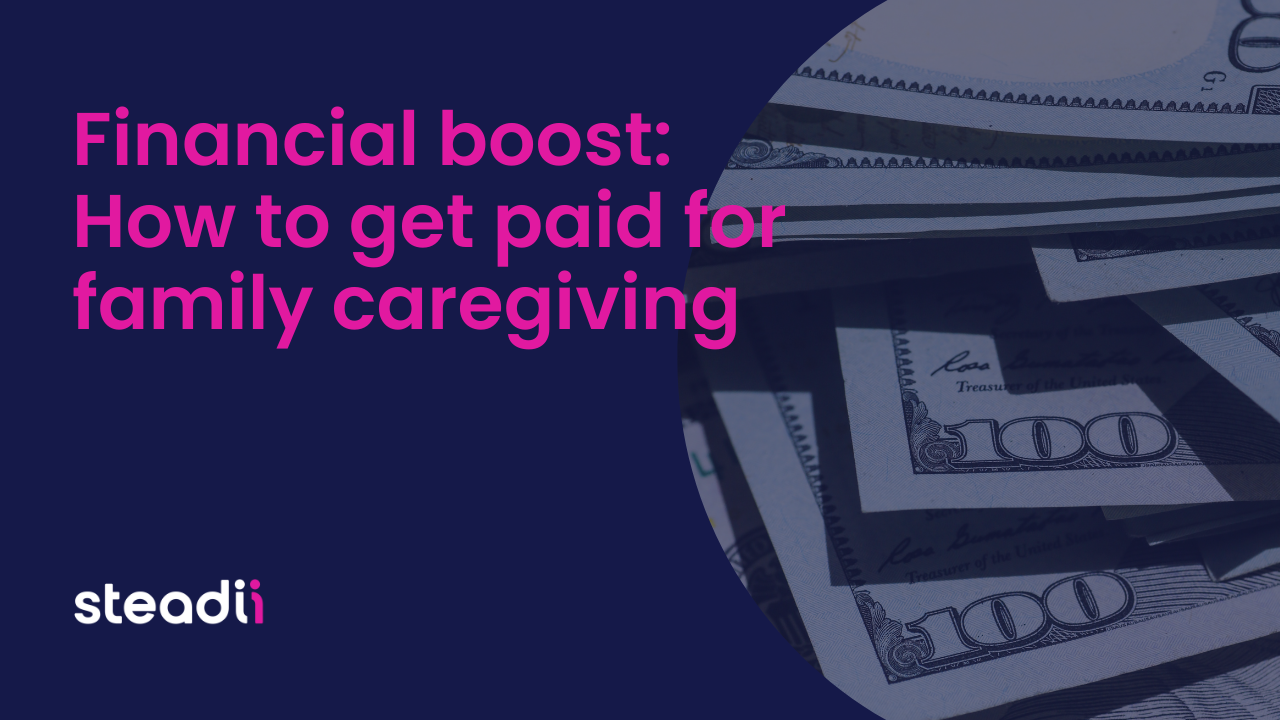Financial boost: how to get paid for family caregiving
Caring for a loved one is a full-time job that comes with additional expenses and zero paychecks. But, there are compensation options. In this article, we explore some of them.
Photo by Giorgio Trovato on Unsplash
Caregiving is intensely physical and emotional. Moreover, it’s a financially risky job without the benefit of a paycheck. You may have found yourself in a caregiver role out of necessity because your spouse, parent, or other loved one is experiencing a diagnosis that prevents them from caring for themselves.
While you absolutely want to do everything you can to help make your loved one safe and comfortable, it’s important to consider the sustainability of your caregiving journey. Continually draining your resources without replenishment can lead to compounding challenges in addition to the burden of caregiving.
A recent Forbes article details a number of ways family caregivers can apply for compensation. We’ve combined this information with additional research to outline paid caregiver opportunities below. In addition, we highly recommend reading the full Forbes article for more detailed information.
If your loved one is on Medicaid, they may be able to hire you as a caregiver through your state’s consumer-directed personal assistance programs (CDPAPs). Each state has different requirements, including some that require you to complete training before being hired as a caregiver. Find your local area agency on aging (AAA) or contact your local Department or Division of Aging Services for help navigating your state’s available resources. Use the Eldercare Locator to find services near you.
If your loved one is a veteran, you may qualify for funds through the VA’s Program of Comprehensive Assistance for Family Caregivers. This specific program has several requirements, including being a live-in caregiver for your loved one. If you do not meet these requirements, consider exploring the VA’s Program of General Caregiver Support Services.
If your loved one has long-term care insurance or a life insurance policy, review it for details on caregiver services. Some of these policies may offer coverage for in-home care, including care from a family member.
If none of the above apply to you or you’re looking for one single way to get started, check out Aidaly which takes the guesswork out of qualifying for programs, credits, and benefits .
The financial strain on caregivers is a common side-effect of caring for a loved one. One Northwestern Mutual C.A.R.E. Study revealed that:
68 percent of family caregivers provide financial support to their loved one
67 percent had to reduce living expenses
63 percent had to withdraw from savings
21 percent had to borrow money to care for their loved one
Caregiving is a demanding and necessary job. You should not have to suffer additional financial burdens as you care for someone who needs your time and attention. We are hopeful that one day caregivers will be fairly compensated. For now, we hope to continue sharing resources that will help relieve some of the financial burden.
If you enjoy resources like this, would like to connect with other caregivers, or would like one-on-one support from a dedicated advocate, try Steadii.

